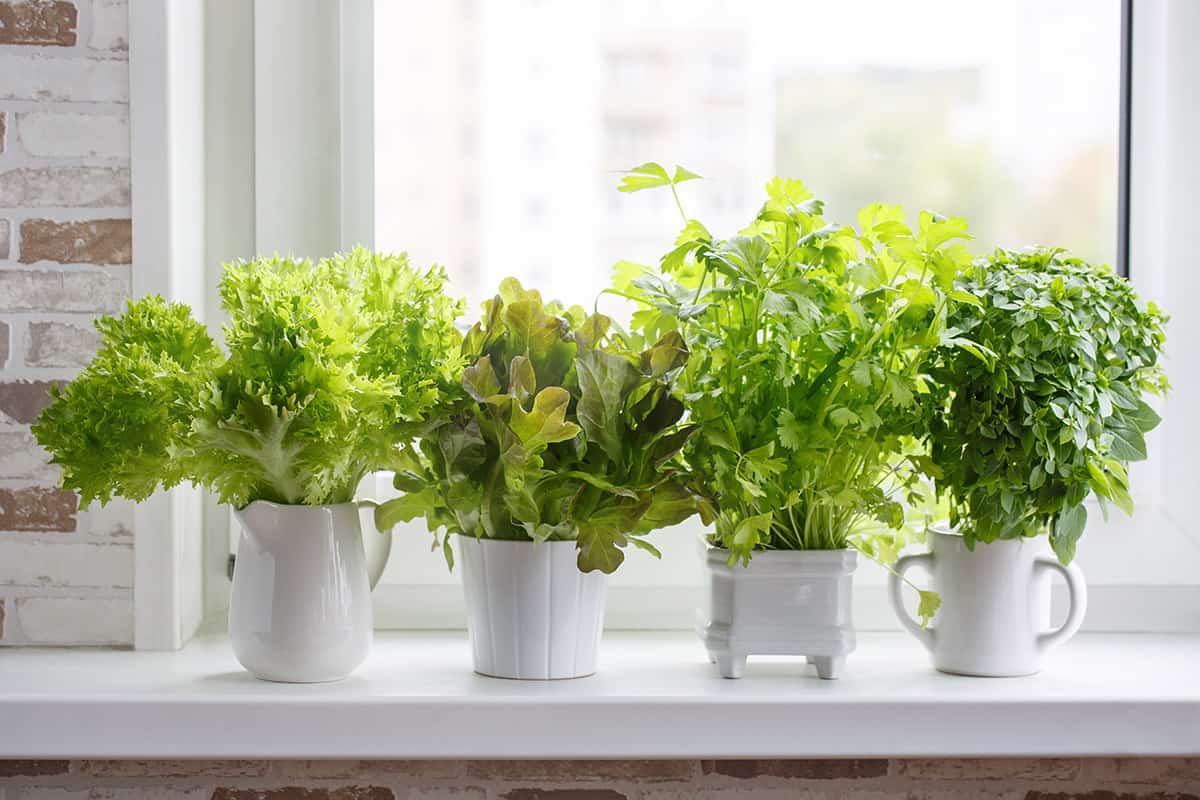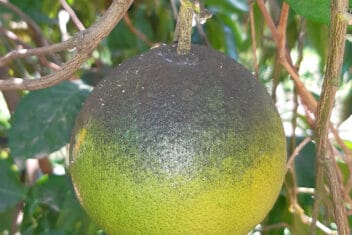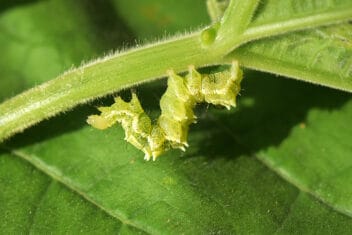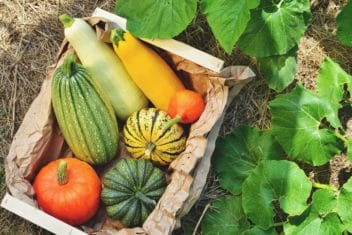With an indoor windowsill garden, you can grow all kinds of edible, culinary, and medicinal species.
Whether the place you’re currently living doesn’t have outdoor space for you to play with, or you’re about to hunker down for several months of snowy weather, you don’t need to set your gardening dreams aside.
Read on to learn the basics of this kind of indoor garden design!
Where to Place Your Windowsill Garden
Most vegetables and herbs require at least six hours of sunlight in order to thrive. When you’re planning your windowsill garden, observe your space to determine which of your windows allows in the most light over the course of the day.
Most of the time this will be a south-facing window, but not always. An upper floor space with skylights, for example, will get more sunlight during the day than the average ground-floor room with a standard window.
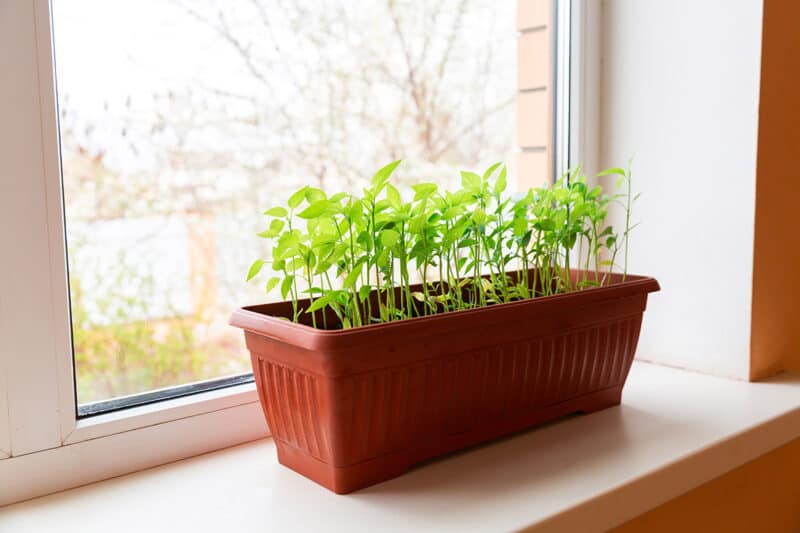
Outdoor trees and tall bushes may also cast shadows into your space at different times of the day.
Aim for an area that isn’t going to be disturbed by small children or animal companions over the course of the day. If you have cats that like to leap up onto things, you may have to create a hanging garden rather than one that sits on a windowsill or small tabletop.
Best Boxes and Pots to Use
Although many of us aim to have less plastic in our lives, this is actually one of the best materials for indoor container gardens. Plastic containers are more low-maintenance than ceramic ones and tend to harbor fewer pathogens.
This is ideal if you’re bringing in pots from the outside to create your indoor garden. If this is your plan, make sure to clean and sterilize all of your planters and tools properly before putting in new soil or planting anything.
Which Plants To Choose
I could go off on a tangent here about hundreds of different species to grow indoors, but ultimately the answer to this is: what do you want to grow?
There’s really no point in growing edible and medicinal plants that you’re never going to use. Make a list of veggies and herbs that you and your family enjoy, and mark them from highest to lowest priority.
Next, determine whether there are dwarf or miniature varieties of those plants available. These are the best types to choose for indoor and windowsill gardens, as they stay quite small but can offer prolific yields.
Also, consider the space you have available. For example, in my living room, I have an entire wall of eight-foot-tall windows, which are facing southeast. I use two of them to grow climbing peas and beans indoors in wintertime, as there’s enough space for them to grow.
In contrast, my kitchen window is north-facing and gets little to no direct sunlight pouring in through it. As a result, I have a few pots of shade-tolerant herbs growing on the countertop, such as chives, thyme, and lemon balm.
Species to Consider
I mentioned that small-scale or dwarf varieties are ideal for a windowsill garden, and I’ve had much luck with several of them.
If you’re growing tomatoes, try ‘Minibel’ topiary tomatoes, or else choose climbing currant, grape, or cherry varieties. These offer a ton of delicious mini tomatoes without taking up a ridiculous amount of space.
For sweet or snow peas, choose small climbing varieties known to offer high yields in cool climates. These don’t require as much sunlight to thrive. Try ‘Tom Thumb’ peas if you’d like to grow miniature plants in small pots.
Should you prefer greens, consider cut-and-come-again varieties such as mesclun greens. Alternatively, you can cultivate standard varieties such as lettuces, spinach, kale, arugula, tatsoi, etc., and harvest them young as microgreens.
Most herbs thrive really well in windowsill gardens, so the sky’s pretty much the limit here. If you’re growing several herbs in the same container, make sure they all have the same soil and water requirements.
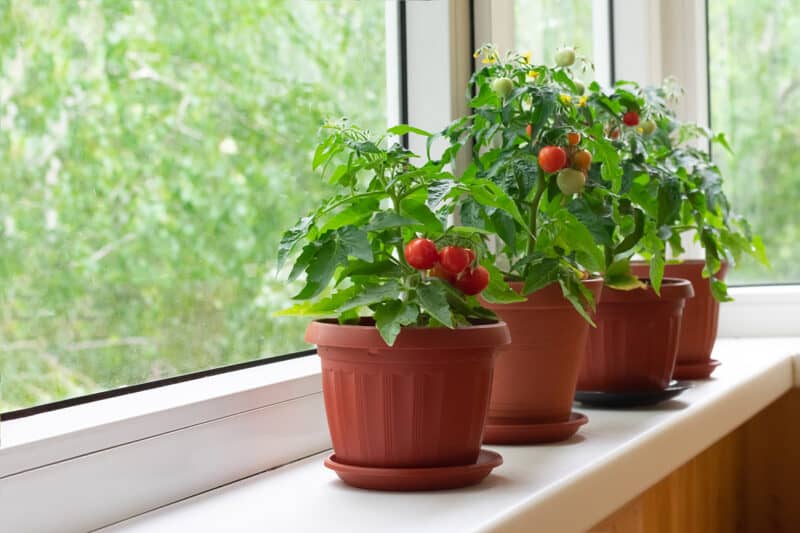
For example, grow woody Mediterranean herbs together because they like sandy, well-drained soil. Keep your moisture-loving parsley, cilantro, and chives elsewhere.
You can also create themed gardens, in which you grow all your tea herbs in one area, culinary herbs in another, etc. Ultimately, your windowsill garden design depends entirely on how much space and light you have to work with.
Soil and Water Requirements
You’ll need to choose a potting soil with aeration and/or drainage mediums added to it, such as perlite or volcanic rock. Otherwise, you’ll need to mix those amendments in yourself.
It’s a good idea to mix in some well-aged compost, so your container plants have plenty of nutrients to draw from as they grow.
Remember that container gardens require a lot more water than outdoor ones do. They’re smaller spaces, and they lose moisture much more quickly than in-ground gardens do.
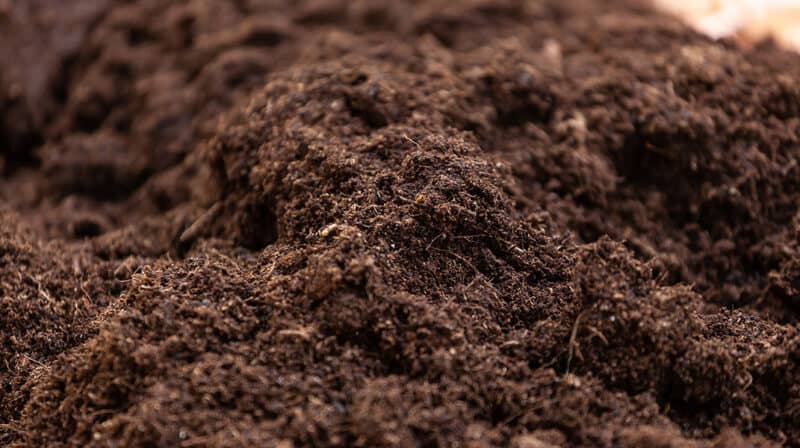
As a result, it’s important to add soil amendments that can help retain moisture. Peat moss and vermiculite are a couple of good options, but make sure to do your research to determine your plants’ watering needs.
Additionally, keep in mind that peat moss is acidic, so it may throw off your soil’s pH balance. Acid-loving plants like dwarf tomatoes and peppers will do just fine with peat. Alkaline species such as climbing peas and beans will likely suffer if you add it to their soil.
Water your container garden when the soil feels dry to the touch. Not just on the surface, mind you, but when you stick your finger about an inch into the soil. If it feels crumbly to you, give it a thorough soaking.
Potential Problems
Windowsill gardens have their potential problems and issues just like outdoor gardens do, of course.
The main issues that indoor container gardens will contend with are nutrient and light deficiencies. If the pallid winter sunshine doesn’t offer enough light for your plants to grow well, you may need to supplement with a full-spectrum LED light setup.
Similarly, if the soil isn’t offering your plants enough nutrition, you may have to offer them some extra snacks every few weeks. Compost tea is a great way to give your plants a nutrient boost. You can also mix some slow-release fertilizer into the soil.
Cross-Contamination
Since you may have multiple plant species in close proximity, it’s likely that if one plant gets a disease or insect infestation, it’ll spread to the other plants nearby. Quickly.
Try to companion plant with beneficial symbiotic species whenever possible to work together to keep each other healthy. If one of the plants show signs of infection or infestation, remove it immediately, and treat the surrounding area with organic insecticides.
Unfortunately, if the issue you’re dealing with is verticillium wilt or a mosaic virus, all the plants in that container will have to be burned and the soil disposed of safely.
Enjoy Your Garden!
Remember that any windowsill can be transformed into a garden. I have lavender growing in my bedroom and medicinal plants in the dining room. There are shade-loving edible greens on top of the bookcase and hanging baskets filled with nasturtiums and tomatoes wherever I can find space.
Any spot you have can be a garden. Just choose species that thrive in your home, and you won’t be disappointed.
